David Leiter does not live a boring life. As a full-time traveler, it comes as no surprise that he documents his adventures on his blog, The World Travel Guy.
Although his adventures began in 2016, he didn’t create his site until several years later. He worked on it for 5 years before he started to see any real success, and today he’s earning $10k/month.
Run-ins with venomous snakes and close calls on sinking ships have done little to deter him; in fact, his goal is to visit every country in the world and continue to grow his blog.
Keep reading to find out:
- How he started traveling
- Why he eventually started his site
- What he did when Covid hit
- Why the pandemic was one of his favorite life periods
- Where his income comes from
- How much traffic his site gets
- His main marketing strategy
- His thoughts on SEO
- His approach to keyword research and link building
- His content creation process
- His misadventures
- Her favorite resources and tools
- His biggest challenge
- His greatest accomplishment
- His main mistake
- His advice for other entrepreneurs
Meet David Leiter
I’m an American who’s been traveling the world full-time for 8 years now. I’m currently based in Bali, Indonesia, where I met my wife Intan (who’s a Bali local), and we’ve been traveling the world together for the last 5 years or so.
My first real international trip was a visit to Iceland in 2016, where I solo traveled the whole country and drove 7,000 kilometers around the Ring Road while sleeping in a rental car along the way.
I was on a very tight budget at the time, so this was the only way I could see a notoriously expensive country like Iceland.
I used this trip to film a drone video of Iceland, which admittedly looks pretty dated by today’s standards, but back in 2016 it was fairly cutting edge and it got more than a million views on Vimeo.
In the same year, I also made a drone video of Colorado that went viral and got featured on international TV by BBC Travel.
The Colorado video was eventually pulled from Vimeo for using too much bandwidth after it passed 3 million views, but you can still see it on YouTube where I reuploaded it later.
It’s looking pretty dated now, but back when it was filmed 8 years ago it was the first time people had seen aerial views of Colorado like this from a drone, so it was fairly groundbreaking in that respect.
This was good drone training for me, and even though I’m not really focused on making videos anymore, I still use drones regularly for my blog nowadays to capture unique photos for the articles I write.
I was also able to monetize these trips somewhat, and even though it wasn’t a big source of income just yet, it made me realize how much I loved traveling, hiking, and seeing the world. I knew I wanted to keep pursuing it.
Why He Created His Site
I created my travel blog in 2019 after I had already been traveling the world full-time for 3 years. I thought it would be a good way to share my stories and photos, make some more income, and hopefully inspire people to travel and see the world.
At that point, I already had a lot of content and experience as a traveler, but I didn’t know anything about growing a blog or monetizing it. I had no idea what to call it either, so I just used a name that a friend suggested, The World Travel Guy.
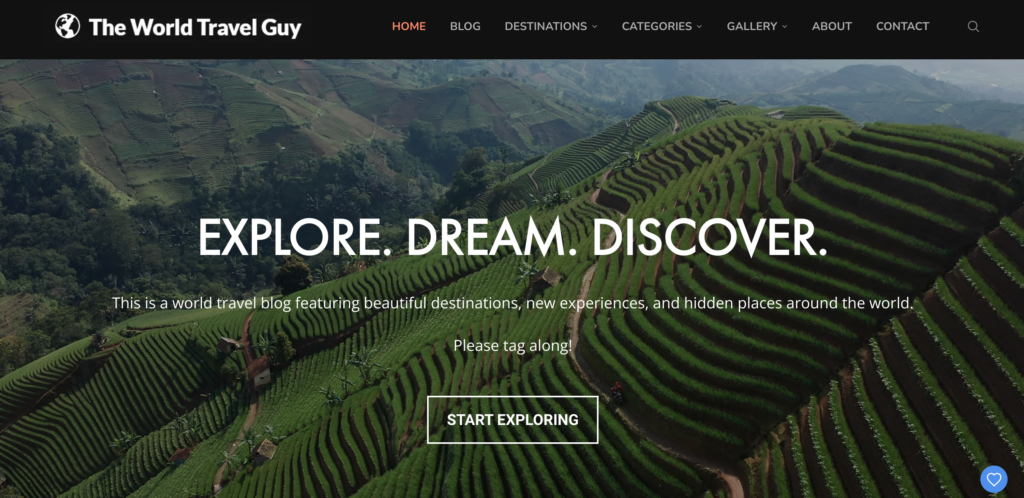

My goal with the blog is to document some of the most scenic places I visit around the world by creating articles, photos, videos, and guides for other travelers.
A year after I started the blog, Covid hit, and the travel industry was crippled for more than 2 years. During that time, it was impossible to effectively monetize my blog, but I kept pushing ahead in the hopes that things would go back to normal eventually and then hopefully my work would pay off.
I was kind of operating on blind faith for a while there, because I spent more than 3 years working on the blog without a single dollar of income.
Me and Intan were also very limited on where we could travel during that time, because most of the nearby countries were completely closed for tourism.
Thankfully I was able to get a special visa to stay in Indonesia, and we spent those 2 years traveling in Bali and lots of other islands in Indonesia. We had to get tested for Covid dozens of times since it was a requirement before every single domestic flight in Indonesia.
As it turns out, even though we weren’t making any money yet, this time that we were stuck in Indonesia was one of my favorite life periods because we really got off the beaten path and saw places that are rarely visited by Westerners.
Indonesia is full of amazing things to see and do. We did jungle treks to see orangutans, and stayed on remote paradise islands with no other people.
These are still some of our most special travel memories, and I think it’s also some of the most unique content I have on my blog.
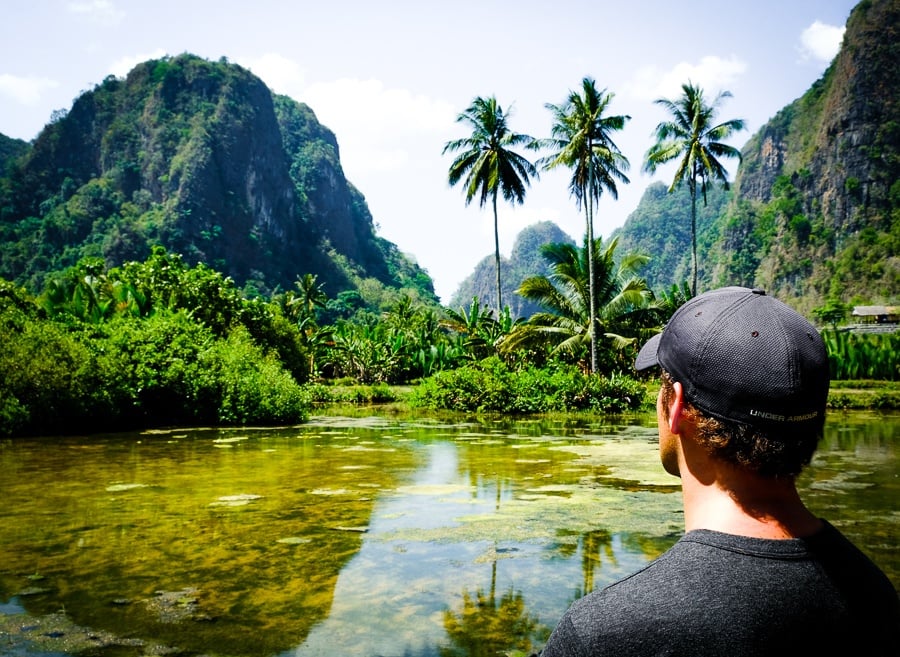

How Much He’s Making
In 2023, I made a full-time income from the blog—up to $10,000 per month. My site has general ads from Mediavine, and I use affiliate links to get revenue from hotels, tours, and other things that I recommend to readers on my site.


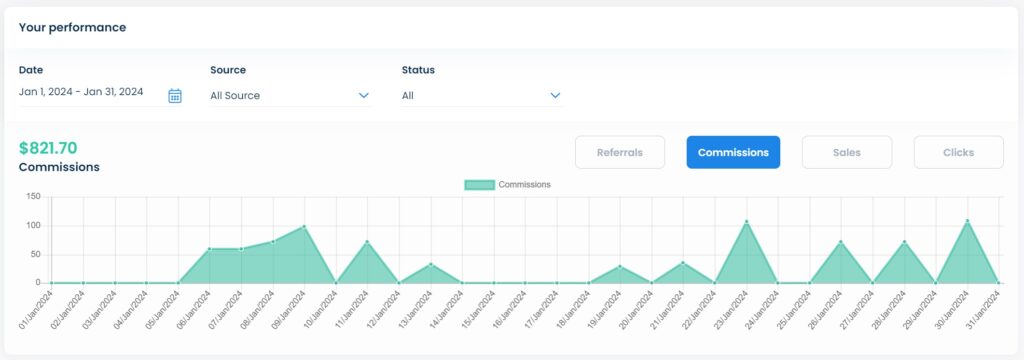

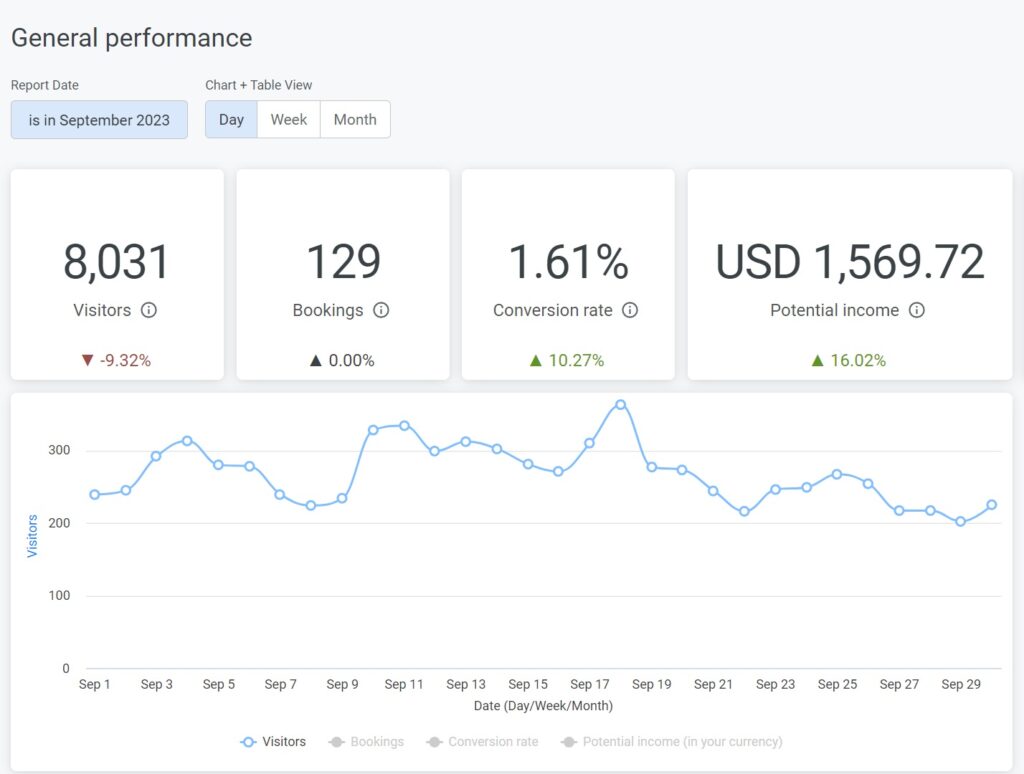

My affiliate programs include things like Booking.com, GetYourGuide, Klook, and Amazon, plus some small companies that have reached out to me for partnership, such as a boat tour company in Coron Palawan, in the Philippines.
I also have some side work doing web design and search engine marketing, which I’ve continued doing in the background while I travel.
My boss has been very gracious and flexible over the years, which really helped me get started as a blogger, especially in the early days when all of my travel was self-funded.
On the blogging side of things, it took me 5 years of work (mostly without pay) to reach my current revenue level, although without Covid, I most likely would have reached this point sooner.
My travel blog averaged about 300,000 to 350,000 readers per month in 2023.
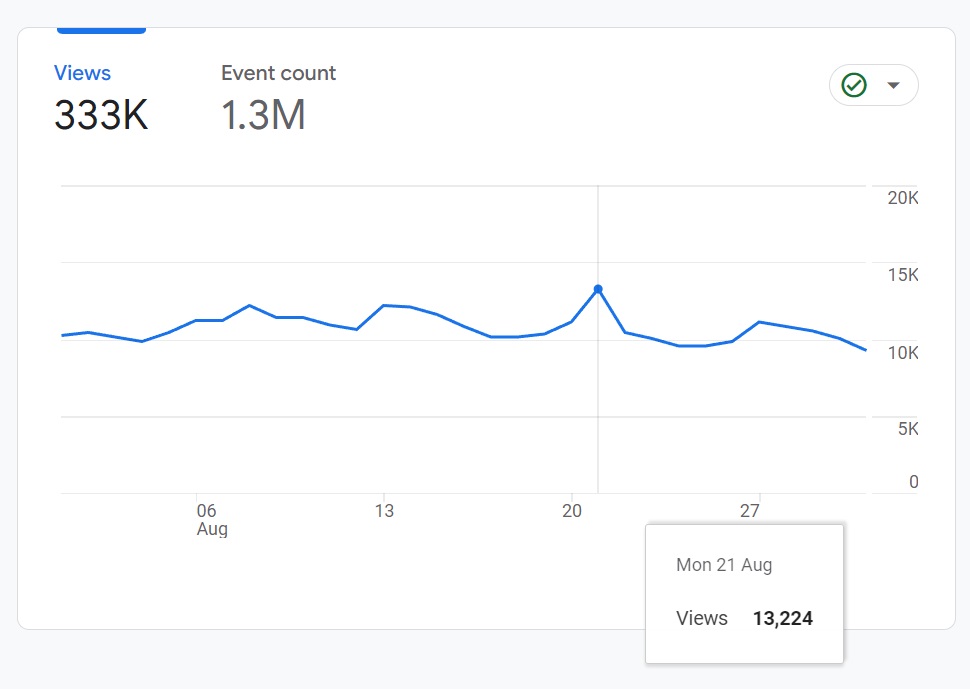

Like most niche bloggers, I had a traffic dip at the end of 2023 because of the Google algorithm updates, but my site is still making a full-time income in 2024, and I expect it to fully recover and keep improving over time as I write more content and the SERPs hopefully get less volatile.
David’s Main Marketing Strategy
My main marketing strategy is SEO. Like most travel bloggers, I don’t have enough of a budget to pay for advertising on Facebook or Google, so almost all of my site traffic is organic.
I had already learned some things about SEO through my prior work background, but a lot of it has been hands-on experience with my travel blog.
When I first started my blog I didn’t know much about SEO, so it’s been a gradual process, and I’m still learning new things every day.
Google’s own documentation is generally a good resource for SEO newbies wanting to make optimized content that’ll show up and perform decently on search engines. Semrush also has some good info about SEO best practices to follow.
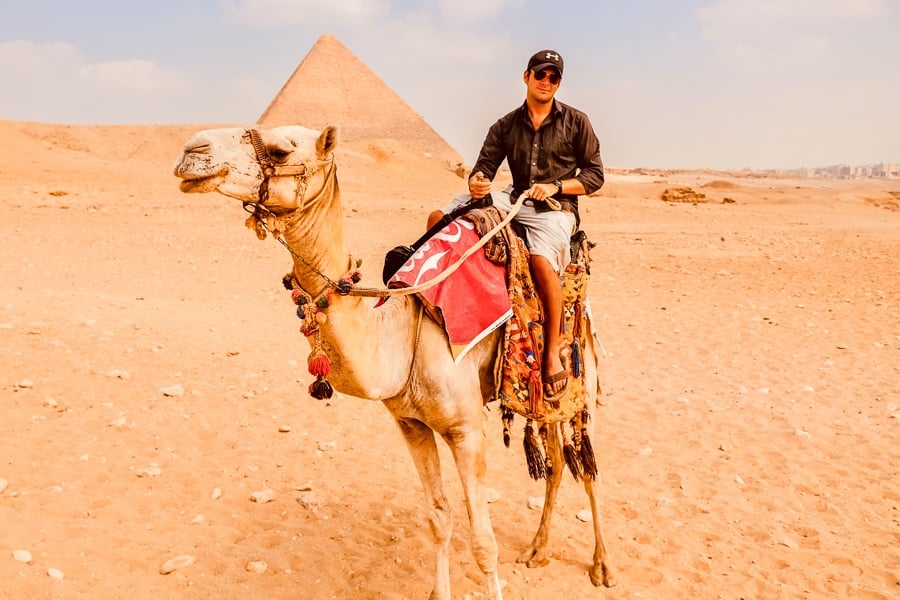

His Thoughts on SEO
SEO is very important and a lot of travel bloggers neglect it or don’t understand how to do it.
There are a bunch of things involved in SEO, but my basic strategy is to write a lot of blog posts and get a lot of backlinks. It’s simple, but it works. Most travel bloggers seem to do only one of these things, or neither.
Not all of your blog posts will perform well on search engines, even if they’re good, but if you throw a lot of stuff at the wall something will stick. Multiply that by hundreds of blog posts, and you’re starting to have a recipe for success.
The tricky thing is to keep writing content that is fresh, original, and doesn’t sound like it was written by a robot. After you’ve already written 400 blog posts, it starts to get pretty tedious.
I’ve found that I write a lot better after a break, so I try to travel for a while if I feel like I’m nearing burnout.
Keyword Research
I try to target a variety of high- and low-competition keywords.
The high-competition keywords are usually more valuable, of course, which is why everyone’s trying to get them, but that means they’re also harder to rank for.
The advantage of low-competition keywords is that they’re easier to rank for, and they’re also more likely to attract backlinks.
For example, I visited the Banggai Islands in Indonesia recently and wrote a guide for it.
Even though these are remote islands that don’t have a lot of high-value traffic, they’re growing in popularity lately, and I already got a backlink organically (from a backpacker site) since my guide is currently one of the only English guides for visiting these islands.
I do keyword research with a combination of Ahrefs and Semrush. Generally, you want to look for keywords that are likely to mesh well with a travel blog, and also longer keywords that are less likely to have a lot of competition from other websites in your niche.
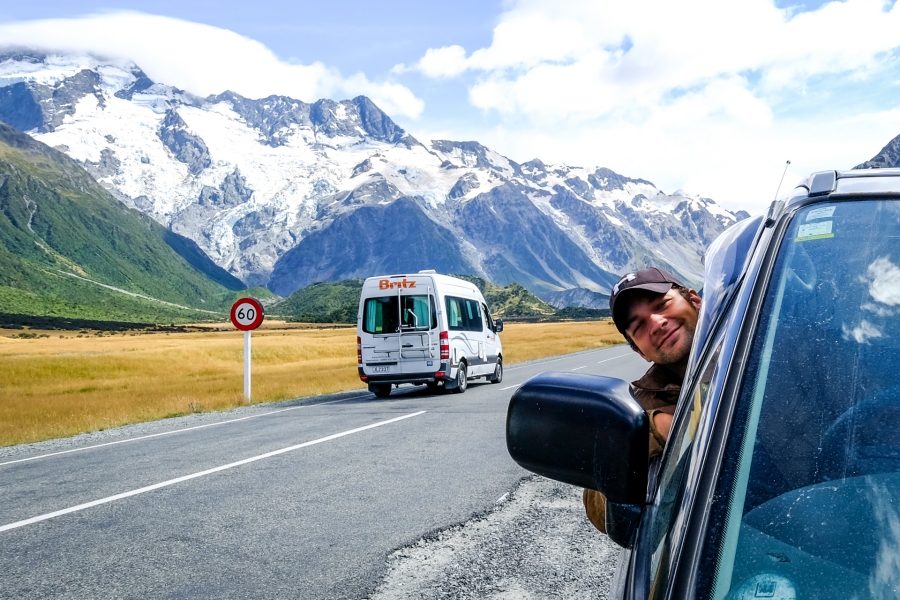

Link Building
Link building is always a good thing. I have a lot of ways to do outreach. One time I entered a photo contest with the Indonesia Tourism Bureau and got a backlink from their official site. That was big for me.
Sometimes if I see a site stealing my photos and using them without credit, rather than file a DMCA or ask them to take down my photo, I’ll ask for a credit link instead.
Believe it or not, I’ve gotten a bunch of high-quality dofollow links over the years from this kind of outreach.
Sometimes I accidentally stumble onto sites using my photos, or other times a reader of my site will let me know about it.
There are also services you can use to find and identify sites that are potentially stealing your photos. One of these I’ve used in the past is CopyTrack.
Of course, there’s always the possibility of getting links organically. In other words, if your travel content is great and helpful and has amazing photos that are superior to the competition, people are more likely to link to it.
Some of my best links actually happened naturally with no outreach on my part. Someone just decided they liked my content, so they linked to it.
Obviously, I wouldn’t recommend just sitting back and waiting for links to come in on their own like this, but it’s still one source of links that can be very valuable.
His Content Creation Process
I do a lot of writing and my site has almost 400 blog posts now. I do all of the content creation myself. I never use AI for any of it, and I plan to keep it that way.
For all the talk about AI lately, it’s still basically useless for creating travel guides that are nuanced and helpful for readers.
I try to write at least one or two new blog posts every week, although I don’t like to sacrifice quality for quantity, so I sometimes fall behind on this target, especially if I’m traveling a lot.
The Yoast SEO plugin can be helpful for optimizing new blog posts. Sometimes I spend days going back and updating old blog posts so they’re still accurate, which takes a lot of time as well, but it’s worth it if you want to keep your site relevant.
His Email List
I do have an email list, but I’m still looking for ways to grow it without being annoying. I’m not a fan of pop-ups asking people to join a mailing list.
I tried that early on, but it just didn’t seem worth the hassle it causes for people.
At some point, I’d like to experiment with offering a free download (such as a Lightroom preset or ebook) to people for joining my mailing list. That way there’s at least an incentive.
Currently, I only have about a thousand people on my mailing list since I haven’t prioritized it, but I’m hoping to grow that number.
I use MailChimp for managing the email list, and that has worked well, but I’m still looking for ways to improve my mailing strategy.
David’s Work Schedule and Adventures
The number of hours I work varies, and I don’t always keep track, but on a typical day I probably spend 2 to 4 hours working on the blog.
Some days I spend 8 to 12 hours working on the blog, while other days I don’t work on it at all.
In the early days of the blog, it ate up a lot more of my time. Now that I’ve already designed my site and written hundreds of posts, I don’t have to spend as much time on it as before, so that helps.
However, maintaining the website is only one part of travel blogging. I also have to travel, take photos, and write new content. I basically spend 6 to 8 months a year traveling, with a bit of rest between each trip.
Obviously, traveling is a lot of fun and I’ll never stop enjoying it, but sometimes it can be hard work, too.
I don’t enjoy overnight flights or sleeping on airport floors. I don’t enjoy being sick or jetlagged. I’ve had several close calls and brushes with death while traveling over the years, so it’s not always fun and games.
For example, one time I almost stepped on a venomous pit viper while hiking in Indonesia. My foot landed within centimeters of the snake, which was coiled up in the center of the path, but thankfully its head was turned away from me and the snake didn’t see how close my foot landed.
This was on a remote island with no antivenom and practically no hospital, so a bite from one of these snakes could mean amputation or death.
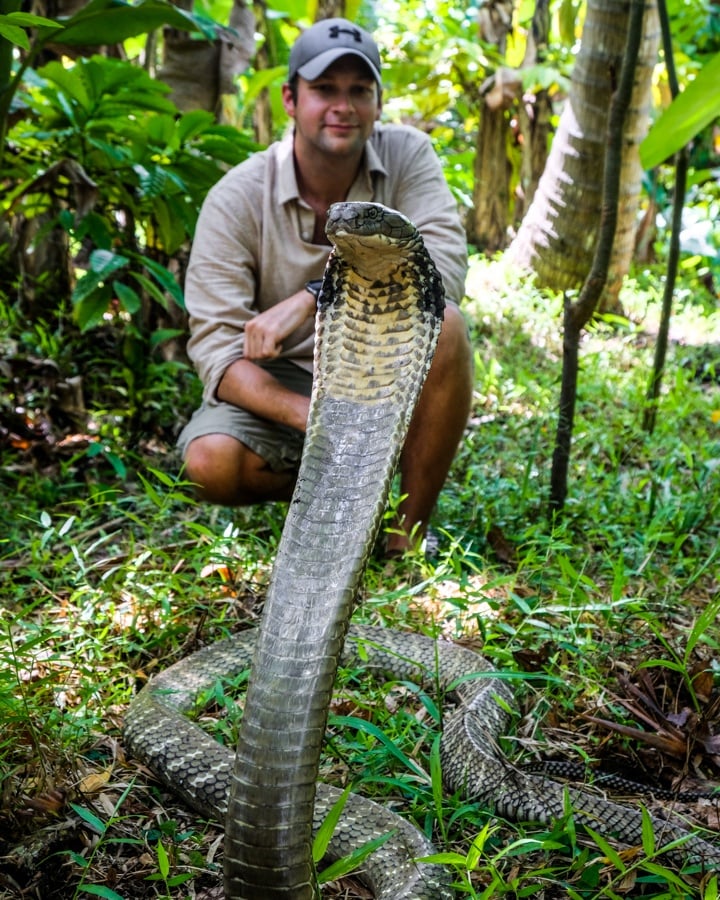

Another time, our boat almost sank during a storm on the ocean near Sumatra. We were making preparations for what we’d do if we had to go overboard and swim. We had spotted a floating wooden fish trap about one kilometer away and planned to try to swim there and hang onto it if the boat went under.
This happened at night in a very bad storm with heavy rain and big waves. There was no land anywhere in sight, so we might have had to float and swim out there for days until a fishing boat or someone else hopefully saw us and rescued us.
Thankfully, the storm passed and we were able to turn our motor on and get back to land. We were completely soaked and cold, but safe.
In the latest incident, a driver we hired in Sulawesi fell asleep at the wheel and drove across the other lane on a busy highway. We frantically woke him up before he drove off the edge of the road, where there was a steep jungle ravine below.
Thankfully, there wasn’t any oncoming traffic in the other lane when this happened, but we were on a busy road that’s usually used by truckers, so things could’ve turned out much worse.
Later we found out our driver had stayed up all night driving 10 hours, so he was operating on no sleep. We canceled the trip right then and stopped in town to rest.
We’ve had lots of experiences like this while traveling over the years, but these are just a few examples of how quickly things can go bad.
I still haven’t been threatened or robbed at gunpoint even though I’ve traveled most of Central and South America, but it wouldn’t surprise me if that happens at some point, and I try to be extra careful in those places.
Sometimes I downgrade my camera gear if I’m traveling somewhere there’s a higher chance of being robbed.
His Favorite Resources
On the photography side of things, I’m a fan of YouTube channels like Simon d’Entremont for clear and concise camera tips.
My blogging style, web design, and SEO techniques were mostly self-taught, although I like to read other travel blogs from time to time for new ideas.
A good resource for SEO news is Search Engine Roundtable.
His Go-To Tools
For keyword research and SEO, the most useful tool I use is Ahrefs, but Moz and Semrush also work well for this.
You can use these tools to check your backlinks, find new keywords to write about, and many other things. You can also use them to check your site traffic trend, although Google Analytics is better if you really want accurate traffic data.
Of course, my camera is one of my most useful tools, too. I upgraded to a Fujifilm X-T5 camera recently and I mostly use a wide-angle lens.
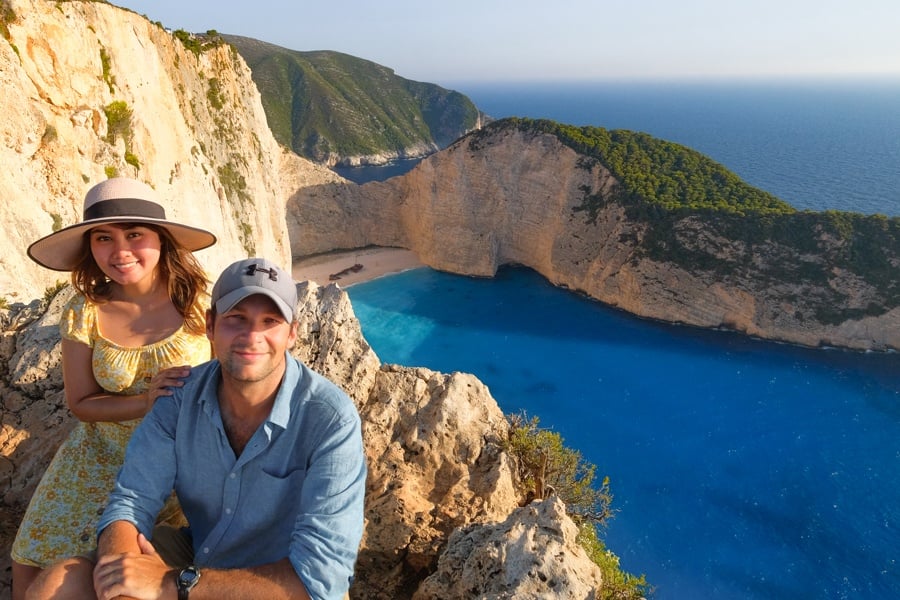

I’m sure there are better cameras out there, but in my budget (around $2,000) it works perfectly and takes great pictures.
For photo and video editing, I use the Adobe tools, Lightroom and Premiere. These work great and you can also use Lightroom to back up your photos in the cloud as you go.
His Biggest Challenge
The biggest challenge for me is writing in bulk. You aren’t going to have a very successful and entertaining blog unless you do a lot of writing, and this got tedious for me after about the 100th blog post.
I could save time on this by using AI, of course, but the quality would probably be bad. Hiring writers is another option, but that costs money and it makes the blog less personal.
So no matter how you slice it, travel blogging is a lot of work and there’s no escaping it.
His Greatest Accomplishment
On the blogging side of things, I love being able to help people travel to new places. I’ve especially enjoyed blogging about Indonesia because it’s full of hidden gems that haven’t really been seen by Westerners.
A lot of this is thanks to my wife, who’s been a big help as my interpreter during our travels in Indonesia.
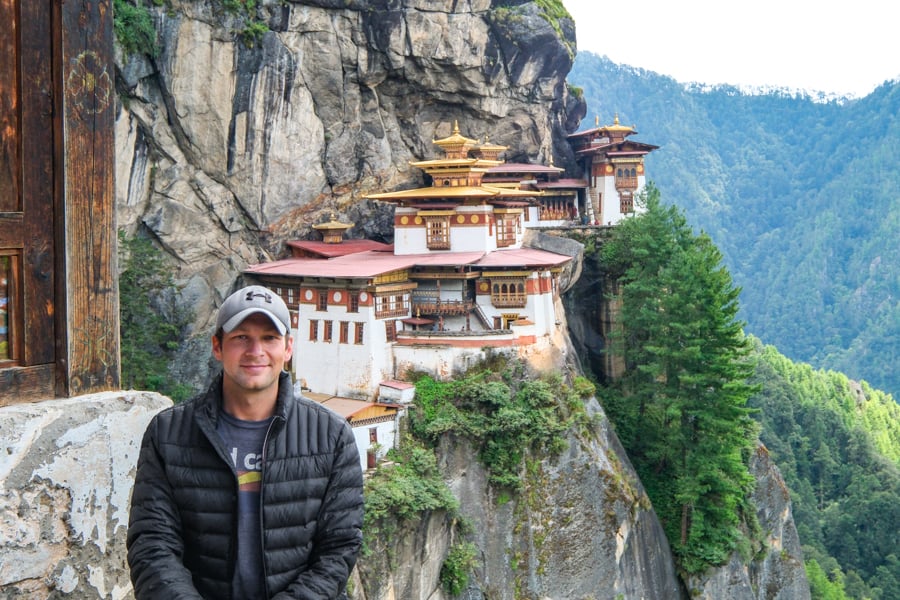

As for personal achievements, I’d love to visit every country in the world.
By some sources, there are as many as 200 countries in the world. I’m still working on that goal. Right now I’m averaging about 10 to 15 new countries per year, but my record so far is 24 countries in one year.
What He Wishes He Knew When He Started
I’ve totally neglected social media, and I wish I had stayed active on there from the beginning, even though it’s a lot of work.
I started a Pinterest account recently and I’ve been pinning posts from my blog on there every day. I’m already getting some more noticeable traffic from it.
I don’t expect Pinterest to ever replace Google as my main traffic source, but every little bit helps.
Google has been a real mess lately, so any serious blogger should be looking for ways to get their eggs out of that basket and build new traffic sources.
His Main Mistake
The biggest mistake I made was starting my blog as late as I did. I wish I started 5 or 10 years sooner.
If so, I would have a lot more experience and probably a lot more income. The travel blogging field is very saturated nowadays.
You can still be successful at it, but it takes more work than it used to, and I think that’ll only become even more true in the future as the amount of competition grows.
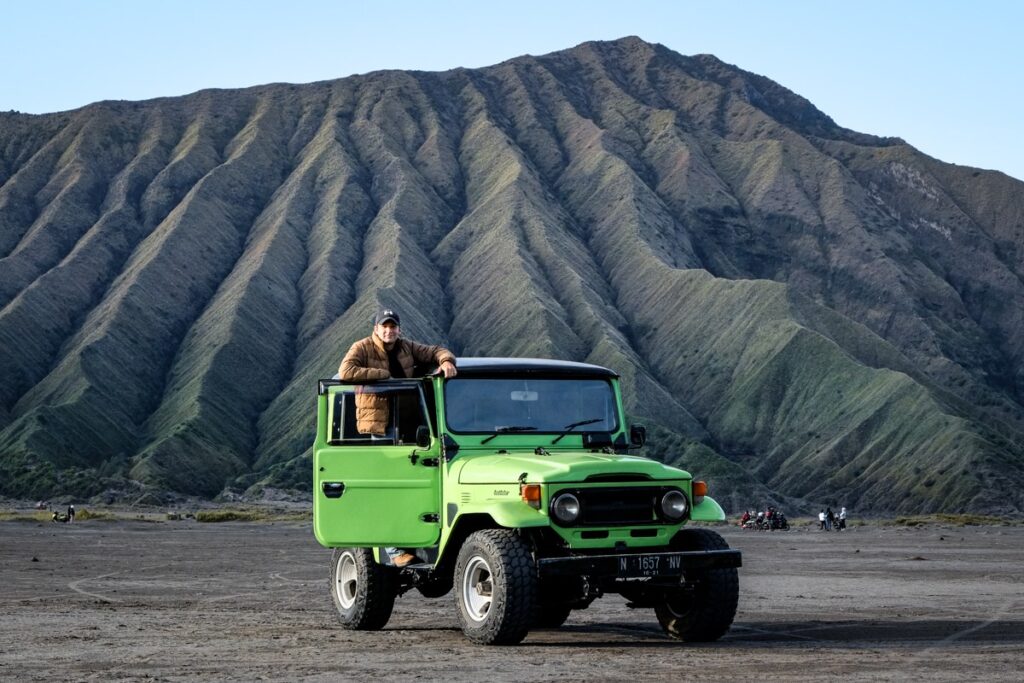

His Advice for Other Entrepreneurs
Probably the best advice I can give is that there are no shortcuts in blogging.
Even if you work smart, you’ll still have to work hard.
I’ve put a lot of time into my blog over the years, and it wouldn’t be successful if I didn’t.
Things like SEO, photo editing, writing, and web design are all things that are very time-consuming if you want to do them well.